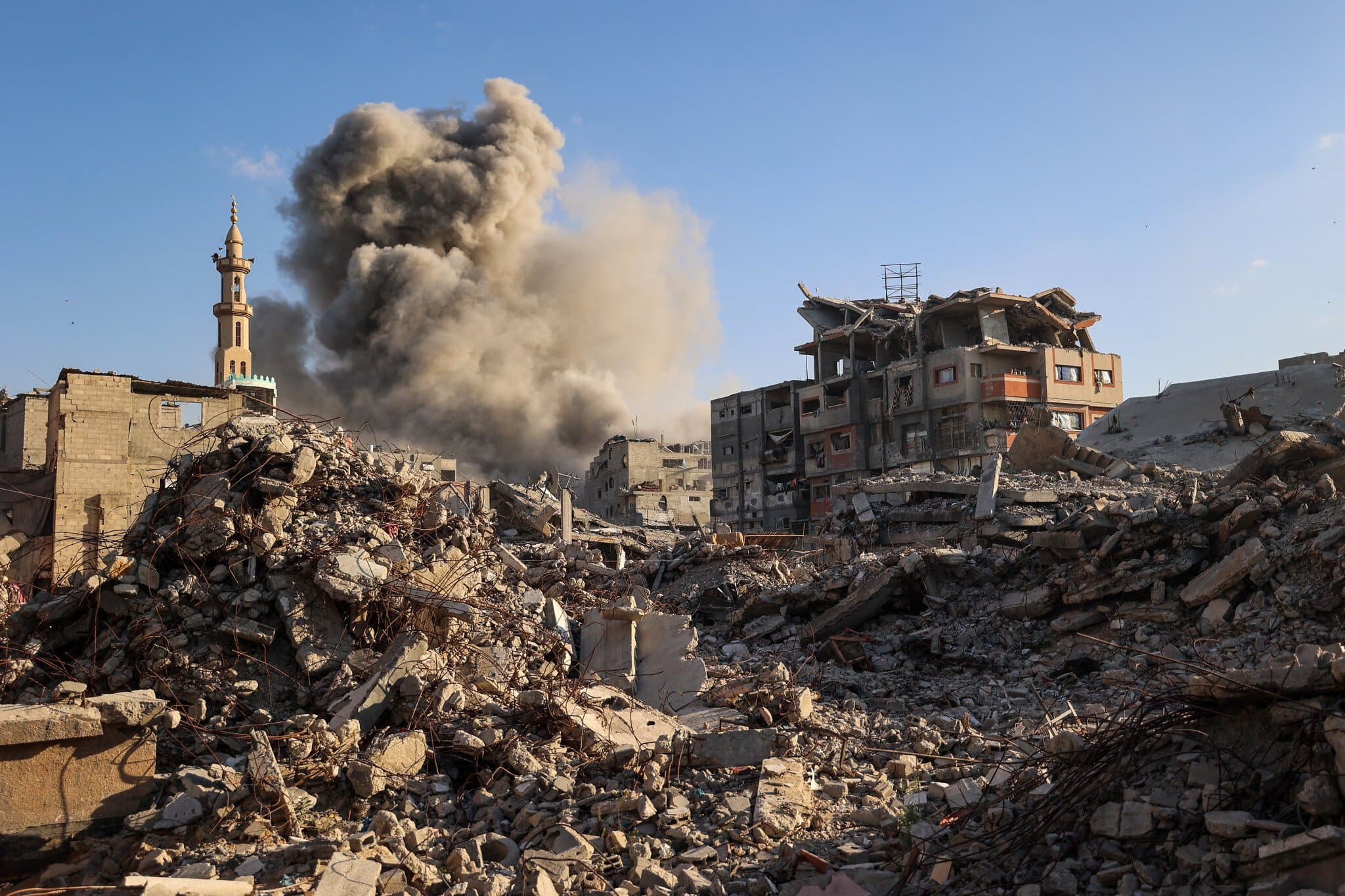The IDF announced the resumption of the ceasefire in the Gaza Strip on Sunday evening after a deadly attack on troops in the southern Gaza Strip in the morning, and a subsequent wave of retaliatory Israeli strikes had threatened to shatter the fragile truce.
Washington was said to have scrambled to intervene to prevent the US-brokered ceasefire from falling apart, just over a week after it came into effect on October 10.
Two Israeli soldiers — Maj. Yaniv Kula, 26, and Staff Sgt. Itay Yavetz — were killed and three others were wounded when Palestinian terror operatives launched an attack on troops in the Rafah area on Sunday morning. The IDF blamed Hamas for the attack, and launched a wave of intense strikes against the terror group in response.
On Sunday night, however, the military announced that, “in accordance with the directive of the political echelon, and after a series of significant strikes, the IDF has begun renewed enforcement of the ceasefire following its violation by the Hamas terror organization.”
It stressed that Israel would “continue to uphold the ceasefire agreement and will respond forcefully to any violation.”
Israel’s announcement that it would return to upholding the truce came after the military carried out strikes against 20 targets in Gaza, which the Hamas-run civil defense agency said killed 45 people, although the figures could not be verified and did not differentiate between civilians and combatants.
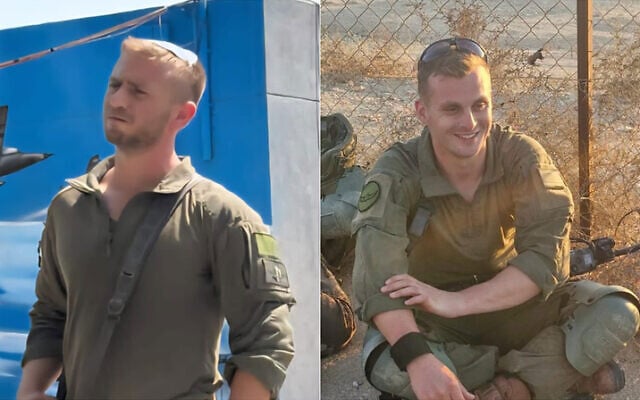
Prime Minister Benjamin Netanyahu held consultations with Defense Minister Israel Katz and other senior security officials in the wake of the deadly attack on troops in Rafah, and decided that Israel would respond “fiercely” to the incident, while still maintaining the necessary momentum to secure the return of the remaining slain hostages from Gaza under the first phase of Washington’s ceasefire framework, Channel 12 reported.
“Israel does not want to bring about the collapse of the ceasefire… There is simply a straightforward equation of a violation and a response — and this will continue as long as Hamas keeps violating the agreement,” a security official told the network that
The same official also warned that the area between the so-called Yellow Line — to which the military withdrew under the terms of the current ceasefire — and the Egyptian border is “a hotspot for potential escalation.”
“It is ostensibly under Israeli control, but [in underground tunnels that remain operative] Hamas terrorists are hiding — trying to harass Israeli forces under cover of the ceasefire, even without explicit orders from their commanders,” the official said.
Meanwhile, in Washington, officials within the administration of US President Donald Trump were working to prevent the flare-up of violence from collapsing the ceasefire entirely, the Axios news outlet reported, citing US officials familiar with the developments.
According to the outlet, US special envoy for the Middle East Steve Witkoff and Trump adviser and son-in-law Jared Kushner spoke to Strategic Affairs Minister Ron Dermer about the developments, and that Washington requested that Jerusalem “respond proportionately but show restraint.”
The appearance of cracks in the ceasefire came ahead of a planned visit from Witkoff and Kushner to Israel on Monday, and the expected arrival of US Vice President JD Vance on Tuesday.
A US official told The Times of Israel that the three officials were expected to meet with Netanyahu and other top Israeli officials during their visit to further advance Washington’s framework for the Gaza ceasefire.
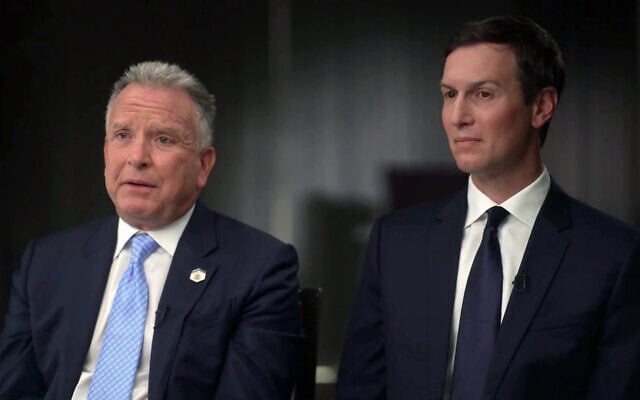
Sunday’s violence was the most serious incident in Gaza since the US-brokered ceasefire entered into effect on October 10, halting two years of war that began with the devastating Hamas-led attack on Israel on October 7, 2023.
A senior Trump administration official told Axios that Washington “knew this was brewing.”
According to the official, the US told Israel to keep its actions directed at Hamas while pressing ahead with the ceasefire plan.
“We are now in charge of what’s going on in Gaza when it comes to the implementation of the deal,” Axios quoted the US official saying. “We are going to be calling the shots.”
US officials told the outlet that Washington had anticipated such clashes could happen in the early stages of the ceasefire, and it now intends to significantly increase its oversight of the plan to ensure it holds together.
“The situation is still really touch-and-go,” one official said.
Disputes over aid deliveries
Israel had also appeared to be mulling the cessation of aid deliveries to the enclave in response to the deadly attack on IDF troops, with a security official claiming that it would be halting all deliveries “until further notice.”
The official spoke on the condition of anonymity, however, as no formal announcement had been made on the matter.
An Israeli official cited by several outlets said Israel had “halted truck movement” into Gaza on Sunday, “due to intensive bombings and dozens of casualties on the Hamas side.”
Aid deliveries would “resume once the bombings end,” the official said.
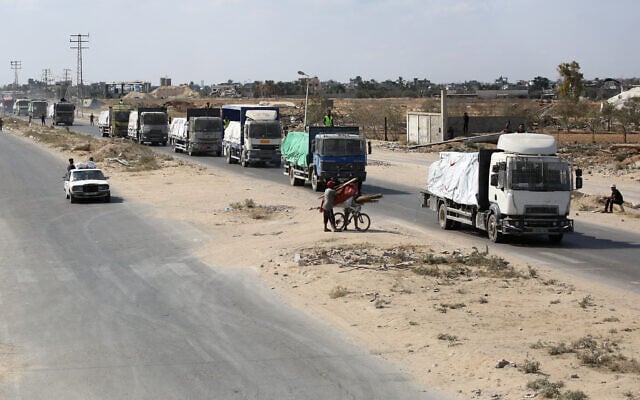
Yet no formal announcement regarding aid deliveries ever came, and an unnamed US official told Axios that Israel had informed Washington it would reopen the crossings into Gaza as planned on Monday morning.
The news outlet said Washington had not been informed in advance of Israel’s decision to close the crossing.
In a further indication of tension between Israel and the US over the potential step of halting aid deliveries, an unnamed official said that the political echelon had decided to allow aid to enter the enclave after all, “due to American political pressure.”
The ceasefire and hostage release deal that entered into effect on October 10 required Hamas to release the remaining 20 living hostages and return all bodies of the 28 deceased hostages accessible to it within the first 72 hours after the IDF’s withdrawal to the so-called Yellow Line inside Gaza.
While Hamas released the 20 living hostages within the first 72 hours, it has still yet to hand over the bodies of 16 deceased hostages, saying that it cannot yet locate them due to the level of destruction in the Gaza Strip.
Israel has accused the terror group of lying, saying it is intentionally withholding some of the bodies.
In the second phase of the ceasefire, as detailed in Trump’s 20-point plan for peace, Hamas will be required to disarm and cede governance of Gaza to a technocratic committee overseen by an international transitional body.
No hard timeline for Hamas disarmament
Trump, in an interview with Fox News aired Sunday, reiterated that Hamas had “promised” it would disarm, but acknowledged that there was no “hard” timeline for when it would do so.
“They promised they would,” Trump told Fox News when pressed on the issue during the interview, conducted on Friday.
WATCH IN FULL: President Donald J. Trump sits down for an exclusive interview with the great @MariaBartiromo on @FoxNews @SundayFutures
— Rapid Response 47 (@RapidResponse47) October 19, 2025
“It’s not a hard timeline, but it’s a line in my own mind,” he said. “At a certain point, if they don’t do what they’re supposed to do, then we’ll have to do it for [them].”
He appeared to suggest that the US would be the one to go into Gaza and disarm Hamas if it did not do so itself, but walked back the claim when pressed further.
“We won’t have boots on the ground,” he clarified, adding that the forced disarmament could be done by “a proxy” — Israel.
While Trump’s 20-point plan does envision Hamas disarming, the actual ceasefire agreement signed by Israel and Hamas in Egypt earlier this month only focused on the initial IDF withdrawal, the hostage-prisoner swap, and humanitarian aid provisions.
The president was also asked about Hamas’s execution of rival militia members in Gaza since the start of the ceasefire, an issue on which he has made inconsistent remarks in recent days.
“[Hamas] said they were gang members… But these are very violent people. This is a very violent part of the world. Nobody’s seen violence like this,” he told Fox.
Initially, last Tuesday, the president claimed that he had given Hamas “approval for a period of time” to carry out the killings, asserting that the terror organization was targeting some “very bad gangs.”
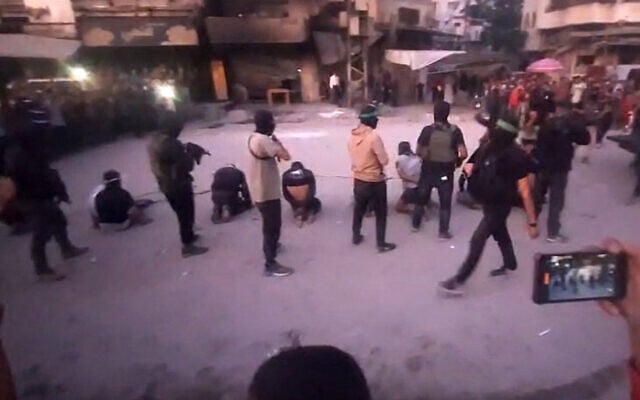
By Wednesday, though, the commander of US forces in the Middle East called on Hamas to immediately stop attacks on “innocent Palestinian civilians” and begin “disarming without delay.”
Hours later, Trump told CNN he was doing “more research on it… It could be gangs plus.”
Separately, the US president appeared to allude to his widely repudiated and since-abandoned February proposal to take over Gaza and permanently relocate its Palestinian population, telling Fox that he initially wanted Egypt and Jordan, which “have a lot of land… right next door,” to host the refugee population.
But his new plan, which, unlike his first, is favored by Arab and Muslim leaders, abandons that idea and encourages Gazans to remain in the Strip.
“The whole thing is all rubble, so it’s not too hard to top that, and we’d build houses… paid for by the wealthiest countries” in the region, Trump said.
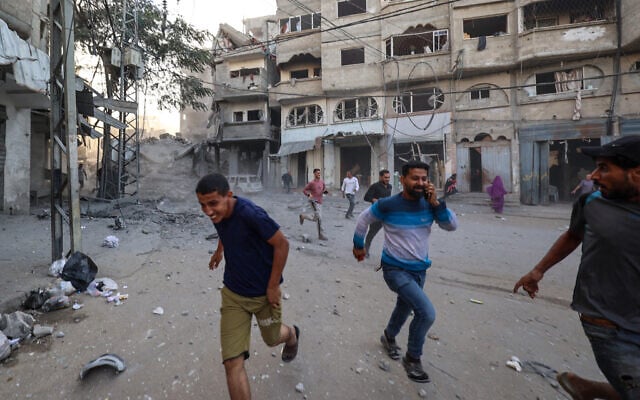
Trump hailed the Arab leaders who have backed his vision for Gaza, but reserved particular accolades for Qatar, which has been a key mediator between Israel and Hamas for the past two years.
Qatar’s Emir Tamim bin Hamad Al Thani is a “fantastic man,” Trump said, noting that “he’s in the middle of a very tough little area because he’s sort of surrounded by every little problem.”
“He has to play it close to the vest a little bit,” Trump said, adding that Qatar was “the one that’s most vulnerable because it [is] right next to Iran.”
“But they had great courage,” he said.
Asked whether he had to lean on Qatar to pressure Hamas to accept his ceasefire deal, Trump said, “I didn’t have to make too much of a case because they are very smart people.”

